And Oña, too.
*The name of this town sounds similar (to me) to the 1985 Phil Collins 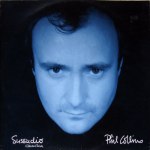 song title “Sussudio”. You’ve got to know that continuing to come up with music and/or other references for the titles of our blog post is quite a burden so forgive me if some are kind of lame!
song title “Sussudio”. You’ve got to know that continuing to come up with music and/or other references for the titles of our blog post is quite a burden so forgive me if some are kind of lame!
Recently, we had the great pleasure of traveling to Susudel and Oña with some folks from our Spanish School (Coffee Club Spanish – email Charity at spanishcoffeeclub@gmail.com for more info.) These two small towns in the southern Ecuadorian Andes are approximately 2 hours drive south of Cuenca. Their elevations are slightly lower than Cuenca’s at 8100 ft. and 7800 ft. respectively. You can see from the maps below, the drive from Cuenca to Susudel is fairly straight forward. Compare that with the squiggly blue line that is the highway from Susudel to Oña. The faint blue line is Rio León. What you can’t tell from the map is the dizzying height from which we descended from Susudel to the river and then back up again to Oña. Quite a ride!
In Susudel, we visited the Iglesia Matriz and a small textile industry of skilled women weavers called “Hatun Kondor”.





Other sights in Susudel



Many families in the greater Susudel area are fabricantes de ladrillos or brick makers. We were privileged to visit such a family. All the bricks are handmade and are considered far superior to machine made bricks by quality builders.




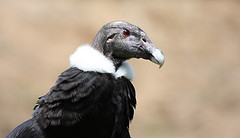
Before heading to Oña, we were taken to an amazing vista point on the north side of the Cañon del Rio Jubones with the hope of seeing an Andean condor. There are less than 100 of these huge raptors in Ecuador. The wingspan of the Andean condor is up to 3 meters wide and they rely upon the updrafts created in canyons such as this one to keep themselves aloft. Although it is possible we saw one of these giant birds soaring way, way, way above us, I could not get a good look through my binoculars to know for sure. However, condor or not, the views were spectacular.
Click on the Vimeo link below to see a panoramic view of the canyon taken by Glenn. For more pleasant viewing, mute your sound so you don’t have to listen to the wind!
Remember that little map showing our route from Susudel to Oña? Perhaps all those switchbacks make a little more sense after seeing the pictures of this canyon. We went down, down, down, across El Rio León and then up, up, up the other side to get to Oña.
Once in Oña, our first stop was the tequila factory. It does not seem to have a name but it is a community industry. The tequila is made from the juice of the local agave plants. The people tap the juice rather than cutting down the plant during the months of August through November as the juice is sweetest then. It is brought to the distillery where the tequila and syrup are separated during the distilling process. We’re not drinkers so we didn’t sample the tequila but I thought the miel (or syrup) was really good.

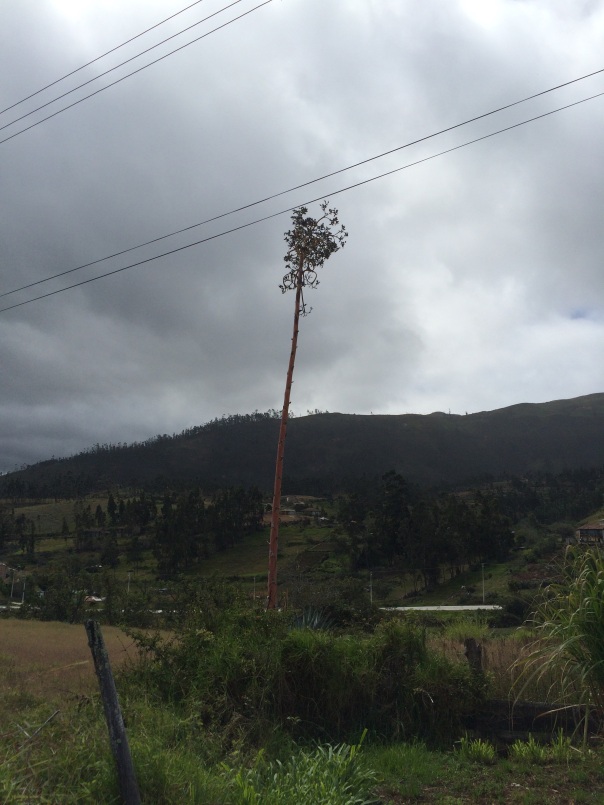


The factory was really a lovely place with beautiful gardens, a smokehouse, orchards, cuyes (guinnea pigs which are raised for food) and a cat with a forked tail.




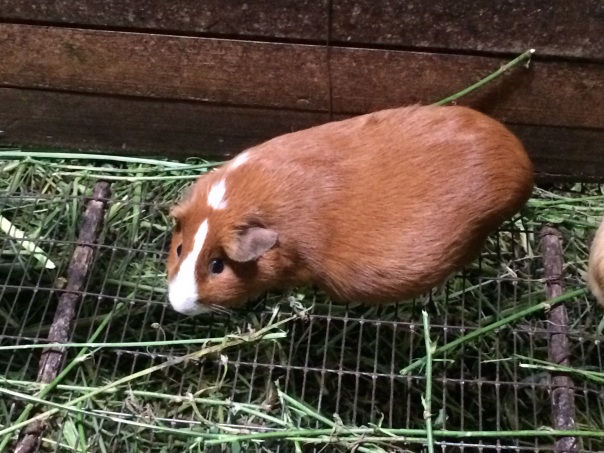


Would you believe that everything in this post up until now was before lunch? Well, it was and we were hungry. We had a pretty typical almuerzo in a restaurant in Oña, but in the category of “largest postre (dessert) served with an almuerzo” the prize goes to the huge piece of delicious carrot cake each of us enjoyed at the end of lunch. If you are familiar with desserts served with Ecuadorian almuerzos, you know that they are generally postage stamp sized, can range in quality from Jello to flan, and are not always included.
Here’s a fun side note. We realized at almuerzo time that Adrian, our tour guide, was the same guide we had for two tours on our first trip to Cuenca four years ago. He was a great guide then and an even better one now!
The last part of our trip was to visit the old neighborhood of Oña. The bus took us up the side of the mountain to the base of the Barrio Tradicional (traditional neighborhood) and we hoofed it up the rest of the way and then back down to the town square. Most of the buildings were abandoned, although not all, and are good examples of typical small town houses built in the 20th century.



The Plaza and Church of San Felipe de Oña were extremely peaceful on a Saturday afternoon.

Another 2 hour drive, and we were back in Cuenca. A few naps were being taken during the return journey. I sat in back with our teacher Ana Luisa and enjoyed some Spanish conversation practice. No extra charge!
And for you, dear readers, at no extra charge, a few pictures I didn’t really know how to fit in! Click on these or any pictures in this blog to enlarge them.
What we’ve learned: Quite a bit of Spanish, actually. We could understand just about everything during the tour.
What we need to learn: Uh . . . more Spanish? I’m sure of it!

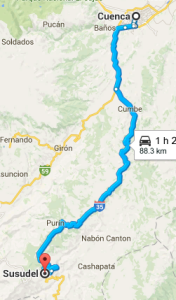



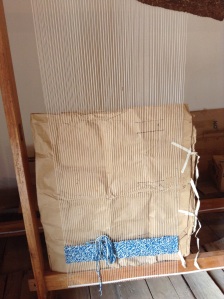

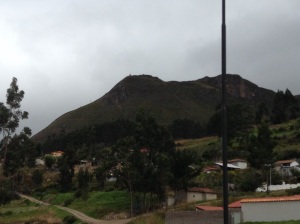

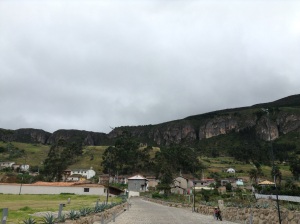
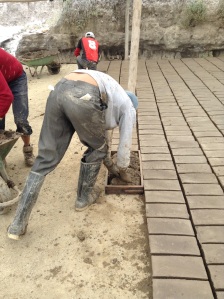
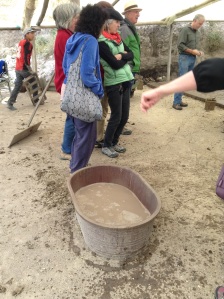
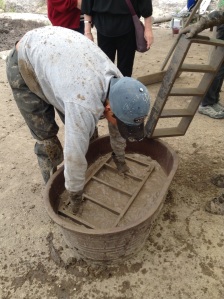











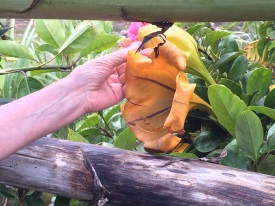

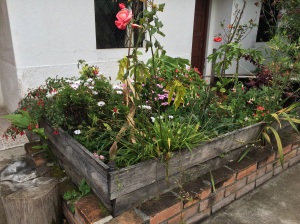



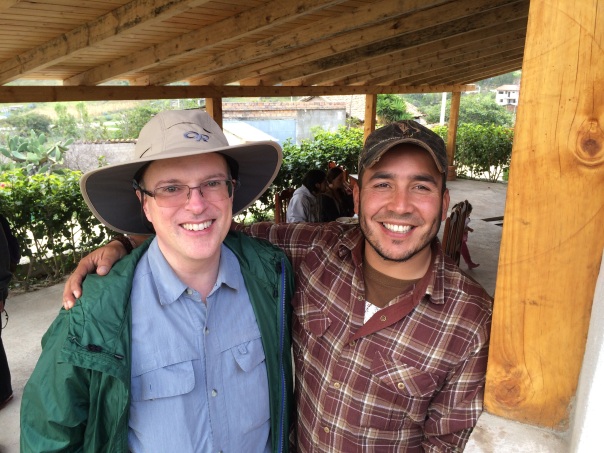
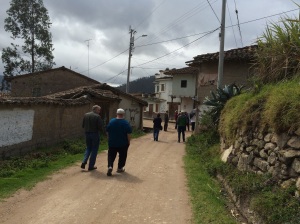







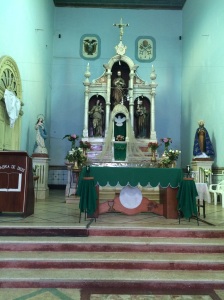



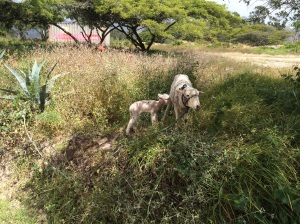
My next door neighbor, who is an elementary school counselor, is coming to Cuenca for 2 weeks for a paid Spanish language immersion class this summer.
LikeLike
Hi Mary – That’s awesome! Please give her my contact info!
LikeLike
Do the cuys taste like chicken?
Ah, less food pictures , I was beginning to gain weight before seeing all the food.
LikeLike
I had cuy once 4 years ago and I don’t remember it tasting like chicken. I just thought it was pretty greasy and boney.
LikeLike
A lovely excursion and what a nice photo of Glenn–that’s a double n! Thanks for sharing your insights, Mara.
LikeLike
Thanks for reading, Holly!
LikeLike
Doesn’t everything taste like “chicken”.?
LikeLike
What a cute pregnant cuy! What’s the weather down there like the first day of winter? How cold do you expect it to get (snow)?
LikeLike
It was very cloudy with no sun breaks whatsoever. That is very rare. I believe that maybe the lows in July and August MIGHT be as low as low 40s and the highs in the low 50s, sometimes warmer. It will not snow.
LikeLike
I love traveling through your eyes! Thankyou.
~ Lisa Simono
>
LikeLike
Thanks for reading the blog, Lisa!
LikeLike
Wow, that was one very good report of a spectacular looking trip. Love Coffee Club Spanish. Thanks for sharing your adventure.
LikeLike
Thanks so much, George! I appreciate your reading and feedback.
LikeLike